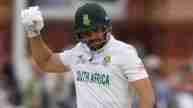Over the years, fielding in cricket has reached extraordinary heights, with players pulling off stunning catches right on the boundary edge. A particularly dramatic trend has emerged where fielders, while falling over the boundary rope, leap into the air, push the ball back into play, and then complete the catch all without touching the ground outside. But that era is now undergoing a major change.
The Marylebone Cricket Club (MCC) has introduced a significant update to the rules concerning such “bunny hop” catches and relay plays. This new regulation comes in the wake of controversy surrounding Michael Neser’s sensational and contentious catch during the 2023–24 Big Bash League (BBL), where he juggled the ball multiple times beyond the boundary line before completing the catch.
Under the new rule, which will be adopted into the ICC’s playing conditions from this month and officially included in the MCC’s Laws of Cricket by October 2026, a fielder who is outside the boundary rope will only be allowed one contact with the ball while airborne. To legally complete the catch, the fielder must then return fully inside the boundary.
Relay Catch Rule Tightened
The rules around relay catches have also been tightened. Typically, a boundary fielder who is about to fall over the rope will lob the ball to a teammate inside the boundary to complete the catch. However, under the new law, if the assisting fielder has already crossed the boundary rope when the final catch is taken, the batsman will be awarded a boundary. This means the original fielder must remain within the field of play until the ball is dead — even if they’re no longer involved in the catch.
What the New MCC Rulebook Will Say:
19.5.2 – A fielder who is airborne is considered to be grounded outside the boundary if their last contact with the ground before touching the ball was not entirely within the field of play. This rule applies even if the ball was previously touched by another fielder.
19.5.2.1 – If the fielder’s first contact with the ball complies with 19.5.2, they may jump from beyond the boundary and hit the ball while airborne. However, from that point on, any further contact with the ground must be inside the field. If the fielder lands outside the boundary during the play even without touching the ball again it will count as a boundary.
19.5.2.2 – If a fielder throws or hits the ball back into play from beyond the boundary, they must land and remain inside the field until the ball becomes dead. Failing to do so will result in the batting team being awarded a boundary.
These changes are expected to bring more clarity and fairness to spectacular boundary-line efforts, encouraging more decisive and cleanly executed fielding plays while minimizing grey areas and controversies.












